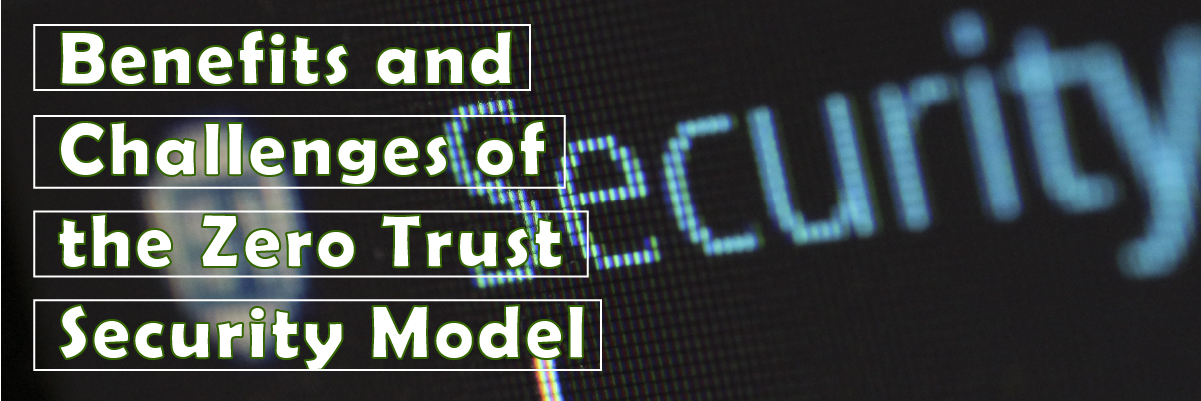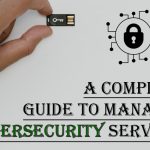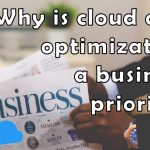Benefits and Challenges of the Zero Trust Security Model
 The Cybersecurity threat landscape has evolved so rapidly that it has become difficult to trust anyone in your network infrastructure. Whom can you trust inside your IT infrastructure? In a Zero Trust paradigm, the answer is no one. This trust model is based on network access control. It means that access to a network or device should only be granted after users’ verification and to the extent required to perform a task.
The Cybersecurity threat landscape has evolved so rapidly that it has become difficult to trust anyone in your network infrastructure. Whom can you trust inside your IT infrastructure? In a Zero Trust paradigm, the answer is no one. This trust model is based on network access control. It means that access to a network or device should only be granted after users’ verification and to the extent required to perform a task.
This article will explore the benefits and risks of the zero-trust security model. Let’s get started.
What is Zero Trust Model?
Zero Trust is a security model granting access to only verified and authenticated users. It provides an ultra-safe defense against potential threats by the user, devices, and network access control. Unlike traditional security models, it does not assume that people within an organization are safe. Instead, it requires every user to be authorized before granting any access.
The zero-trust security model is generally based on a three-step process.
- Verify a user’s identity via authentication
- Implement device and network access control
- Limit privileged access.
This model promotes that organizations must not trust individuals/entities outside their network perimeters.
Zero Trust Use Cases
The Zero Trust model has increasingly been formalized as a response to secure digital transformation and a variety of complex, devastating threats seen in past years. Organizations can benefit from the Zero Trust security model.
You are required to secure an infrastructure deployment model, including
- Hybrid, multi-cloud multi-identity
- Legacy systems
- Unmanaged devices
- Software-as-a-service (SaaS) applications
It is required to address critical threats use cases, including:
- Supply chain attacks_ generally involve privileged users working remotely and on unmanaged devices.
- Ransomware_ a two-part problem, including identity compromise and code execution.
- Insider Threats_ extremely challenging while users are working remotely.
Here are some considerations an organization have
- User experience impact considerations, especially while using multi-factor authentication (MFA).
- SOC/analyst expertise challenges.
- Industry or compliance requirements
Each organization has unique challenges because of its business, current security strategy, and digital transformation maturity. If appropriately implemented, zero trust can adjust to meet specific requirements and ensure a return on investment (ROI) on your security strategy.
Benefits of Zero Trust Security Model

Let’s outline the main benefits of the Zero Trust security model.
- This approach requires you to regulate and classify all network resources. It lets organizations visualize who accesses resources for which reasons and understand what measures need to be implemented to secure help.
- Implementing a Zero Trust security model is associated with deploying solutions for continuous monitoring and logging off user activity and asset states. It allows organizations to detect potential threats efficiently and respond to them promptly.
- This model helps expand security protection across multiple containerized and computing environments, independent of the underlying infrastructure.
- It prevents data breaches and has lateral movements using application micro-segmentation.
- A zero trust model ensures organizational security while providing a consistent user experience.
Common Technical Challenges
Here are the most common technical challenges faced by users/organizations while implementing a Zero Trust security model.
1. Network Trust and Malware
Organizations need to ensure that each device and user can safely connect to the internet regardless of the location, without the complexity associated with the legacy techniques. Moreover, they need to proactively detect, block, and reduce the targeted threats, such as phishing, malware, ransomware, advanced zero-day attacks, and DNS data exfiltration. The Zero Trust security model can improve your organization’s security posture while reducing the risk of cyberattacks.
2. IT Resources and Complexity
Security and enterprise access are complex and change continuously. Traditional enterprise technologies are complex, and making changes often take time to use valuable resources. A Zero Trust security model can reduce the time and architectural complexity.
3. Secure data and application access
Conventional access tools and technologies like VPN rely on trust principles resulting in compromised user credentials that lead to data breaches. Organizations need to reconsider their access model and technologies to ensure their business is secure while enabling fast and straightforward access for all users. The zero-trust security model reduces the complexity and risk while providing a consistent and efficient user experience.
Final words
In this article, we have discussed some of the benefits and challenges of the Zero Trust model. The benefits of implementing this framework go far beyond security. But there are still some risks and challenges associated with this approach. Changes in the threat landscape might encourage organizations to invest in a Zero Trust security model for network access control and identity management. These organizations should be aware of all the challenges and risks of this security model.
Zero trust can be provided as a service, as Protected Harbor proposes in its zero-trust network access technique. Before introducing zero trust, you can take a phased approach, starting with your most critical assets or a test case of non-critical assets. Whatever your starting point, a best-in-class zero-trust solution will help you reduce risk and manage security right away. Protected Harbor uses various features, like remote monitoring 24 hours a day, 99.99 percent uptime, malware protection, and more, to provide an unrivaled experience and satisfaction. To learn more about how we do it, go here.






